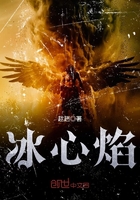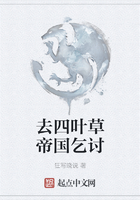This unchecked relating and coupling of ideas in imagination is connected with volitional impulses aiming to find for the ideas some starting-points in immediate sense-perception, however vague these starting-points may be. This is what gives rise to the child's play-impulse. The earliest games of the [p. 294] child are those of pure imagination; while, on the contrary, those of adults (cards, chess, lotto, etc.) are almost as exclusively intellectual games. Only where aesthetical demands exert an influence are the games of adults the productions of the imagination (drama, piano-playing, etc.), but even here they are not wholly untrammeled like those of the child, but are regulated by the understanding. When the play of a child takes its natural course, it shows at different periods of its development all the intermediate stages between the game of pure imagination and that in which imagination and understanding are united. In the first years this play consists in the production of rhythmical movements of the arms and legs, then the movements are carried over to external objects as well, with preference to such objects as give rise to auditory sensations, or such as are of bright colors. In their origin these movements are obviously impulsive acts aroused by certain sensational stimuli and dependent for their purposive coordination on inherited traits of the central nervous organs. The rhythmical order of the movements and of the feelings and sound-impressions produced by them, obviously arouse pleasurable feelings, and this very soon results in the voluntary repetition of the movements. After this, during the first years, play becomes gradually a voluntary imitation of the occupations and scenes that the child sees about him. The range of imitation then widens and is no longer limited to what is seen, but includes a free reproduction of what is heard in narratives. At the same time the interconnection between ideas and acts begins to follow a more fixed plan.
This is the regulative influence of the activity of understanding, which shows itself in the games of later childhood in perscribed rules. This development is often accelerated through the influence of those about the child and through artificial forms of play generally invented by adults and not always suited to the child's imagination; [p. 295] still, the development is to be recognized as natural and necessarily conditioned by the reciprocal interconnection of associative and apperceptive processes, since it agrees with the general development of the intellectual functions. The way in which the processes of imagination are gradually curtailed and the functions of understanding more and more employed, renders it probable that the curtailing is due not so much to a quantitative decrease of imagination as to an obstruction of its action through abstract thinking. When this has once set in, because of the predominating exercise of abstract thinking, the activity of imagination may itself through lack of use be interfered with. This view seems to be supported by the fact that savages usually have all through their lives an imaginative play-impulse related to that of the child.
10. From imaginative forms of thought as a starting point the functions of understanding develop very gradually in the way already described (p. 264). Aggregate ideas that are presented in sense-perception or formed by the combination, activity of imagination are divided into their conceptual components, into objects and their attributes, into objects and their activities, or into the relations of different objects to one another.
The decisive symptom for the rise of the functions of understanding is therefore the formation of concepts. On the other hand, actions that can be explained from the point of view of the observer by logical reflection, are by no means proofs of the existence of such reflection on the part of the actor, for they are very often obviously derived from associations, just as in the case of animals. In the same way there may be the first beginnings of speech without abstract thinking in any proper sense, since words refer originally only to concrete sensible impressions.
Still, the more perfect use of language is not possible until ideas are conceptually analyzed, related, and transferred, even [p. 296] though the processes are in each case entirely concrete and sensible. The development of the functions of understanding and that of speech accordingly go hand in hand, and the latter is an indispensable aid in retaining concepts and fixing the operations of thought.
10a. Child-psychology often suffers from the same mistake that is made in animal psychology: namely, that the observations aren't interpreted objectively, but are filled out with subjective reflections. Thus, the earliest ideational combinations, which are in reality purely associative, are regarded as acts of logical reflection, and the earliest mimetic expressive movements, as, for example, those of a new-born child due to taste-stimuli, are looked upon as reactions to feelings, while they are obviously at first nothing but connate reflexes which may, indeed, be accompanied by obscure concomitant feelings, but even these can not be demonstrated with certainty.
The ordinary view as to the development of volition and of speech, labors under a like misconception. Generally there is a tendency to consider the child's language, because of its peculiarities, as a creation of his own.
Closer observation, however, shows that it is created by those about him, though in doing this they use the sounds that the child himself produces, and conform as far as possible to big stage of consciousness. Thus it comes that some of the very detailed and praise-worthy accounts of the mental development of the child in modern literature can serve only as sources for finding objective facts. Because they stand on the basis of a reflective popular psychology, their psychological deductions require correction along the lines marked out above.















